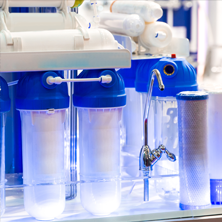Energy Storage
& Capture

Reducing energy and cost requirements
Nanoparticles can be used in a large variety of applications in energy storage and sorbent materials, including gas capture and storage, photovoltaics, batteries, fuel cells and catalysts. New applications are constantly being developed, and Promethean Particles offers materials to move these applications forward.
Metal oxides are used in energy storage applications, such as fuel cells and batteries. Metal organic frameworks (MOFs) can absorb gas and other materials. Small particle size and higher specific surface area allow for milder processing conditions, such as lower sintering temperatures. In turn, this can help reduce energy requirements and the associated costs during downstream processing. Costs previously limited the application of MOFs, but Promethean Particles’ large-scale continuous production is positively impacting the market and enabling advances.

Metal Organic Frameworks
- Coordination compounds composed of metal ions or clusters that are linked by rigid organic linker molecules to form 2D or 3D porous structures
- Void space can be used to absorb/store gases, such as H2, CO2, SO2 and N2
- Surface area is typically more than 2,000 square meters per gram
- Used for gas capture/storage, gas separation, adsorbents, catalysis, water purification
- Demonstrated production scalability

Nickel Nanodispersion
- Used in electrode materials for fuel cells/batteries, magnetic fluids and catalysts, automotive catalytic converters
- Cost-effective alternative to noble metals
- Non-oxidised material
- High crystallinity
- Standard 25 wt% Ni available in water or ethanol

Cerium Oxide Nanodispersion
- Used in fuel cells, fuel additives, water splitting, catalysis
- Particle size is <10 nm (by TEM)
- Standard 10 wt% CeO2 available in water
We’re ready to
discuss your next
project
We’re ready to discuss your next project

Have a technical challenge? Connect with our team of experts to see what we can bring to your product application.


